Choosing the right wheelchair is an important decision based on your specific needs, abilities and lifestyle.
With the many different types of wheelchairs available, it can be challenging to know where to start. The two main types of wheelchairs are manual wheelchairs and electric wheelchairs (also known as powerchairs), each offering unique advantages.
In this article, we’ll explore the pros and cons of both types, helping you make an informed choice about what type of wheelchair is best suited for your individual needs.
Electric wheelchairs, or powerchairs, are battery-operated and controlled via a joystick on the armrest, making them a great choice for those with limited mobility.
A fully charged battery typically provides 8-10 hours of use, enabling users to go about their day without having to worry about running out of power, offering both independence and peace of mind for longer journeys.
Modern electric wheelchairs are also lightweight and foldable, making them easy to store, transport in the boot of your car, or take on holiday.
These features work together to provide a sturdy, portable and reliable choice for those with more complex mobility needs.
Find out more about how to choose a power wheelchair in our dedicated article.
Electric powerchair wheelchairs offer more independence for the user as they do not require another person to help move around.
Electric wheelchairs are usually designed with comfort in mind and include features such as padded seats and footrests.
Many folding powerchairs are now available, combining the convenience of motorised mobility with the benefits of portability and space-saving design.
Electric wheelchairs are easier to manoeuvre in tight spaces than manual wheelchairs due to their responsive joystick control.
Electric wheelchairs can be customised to fit the different needs and comfort of the user.
Due to their motorised components and comfort levels, electric wheelchairs can be more expensive than manual wheelchairs.
As powerchairs rely on batteries to operate, they need to be charged regularly. Batteries usually need replacing every 24 months.
The reliance on a motorised wheelchair can lead to reduced physical health and mobility.
Operating an electric wheelchair can be difficult to use for those with cognitive impairments or limited dexterity. Find out where you’re allowed to use a powerchair on pavements and roads.
Manual wheelchairs are non-motorised, lightweight mobility chairs that require the user or a caregiver to move the chair manually using their arms or by pushing the wheels.
Thanks to their simple designs and lightweight materials, manual wheelchairs are not only the lightest but also the most affordable type of wheelchair.
Due to their compact and foldable design, collapsible manual wheelchairs are ideal for shorter journeys, fitting into cars and taking on holidays.
These features make manual wheelchairs a great choice for those who need a functional, cost-effective solution to support their mobility.
Manual wheelchairs tend to be cheaper than electric wheelchairs due to their simpler design, fewer components, and lower manufacturing costs.
Manual wheelchairs are lighter than electric chairs due to lightweight materials and simple designs, which do not require a bulky battery or motor.
Manual wheelchairs are easier to transport and store, making them a popular choice for those who frequently travel by car, train or plane.
Manual wheelchairs require an element of upper body strength to push wheels and propel the chair, which can help improve overall fitness.
Manual wheelchairs are more reliable than powerchairs due to their lack of mechanical parts. You also don’t need to remember to charge batteries!
Individuals using manual wheelchairs may require assistance with pushing – either due to terrain or physical strength.
Users may struggle with pushing manual wheelchairs over uneven surfaces, steep inclines, or long distances.
A manual wheelchair can strain the arms, shoulders, and upper body, making it challenging for individuals with limited upper body strength.
Users can find it challenging to manoeuvre manual wheelchairs in tight or narrow spaces.
The weight of the wheelchair is important for two reasons: first, you need to consider how easy it is to push, and second, whether you need to lift it in and out of car boots or up the stairs.
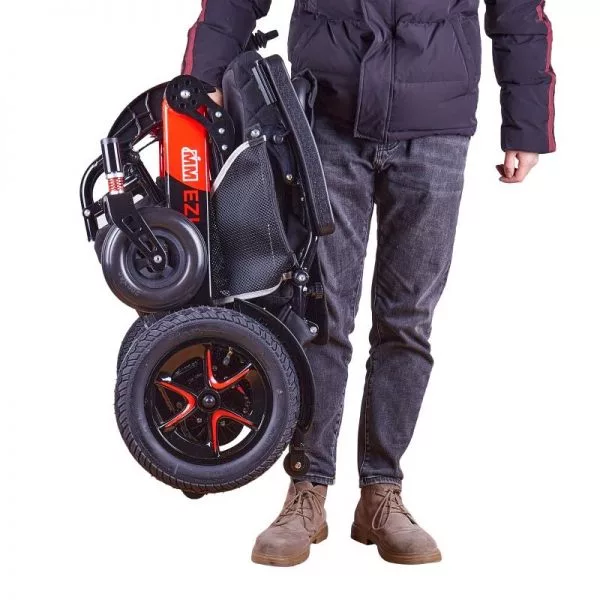
It’s important to consider how much storage space you have in your home.
Most wheelchairs are foldable, and depending on the model, some parts – such as the footrest, arms, and wheels – may be detachable.
Another key consideration is whether your wheelchair will comfortably fit through the doors of your home and in the boot of your car. You might also want to consider whether it is aircraft- or train-friendly!
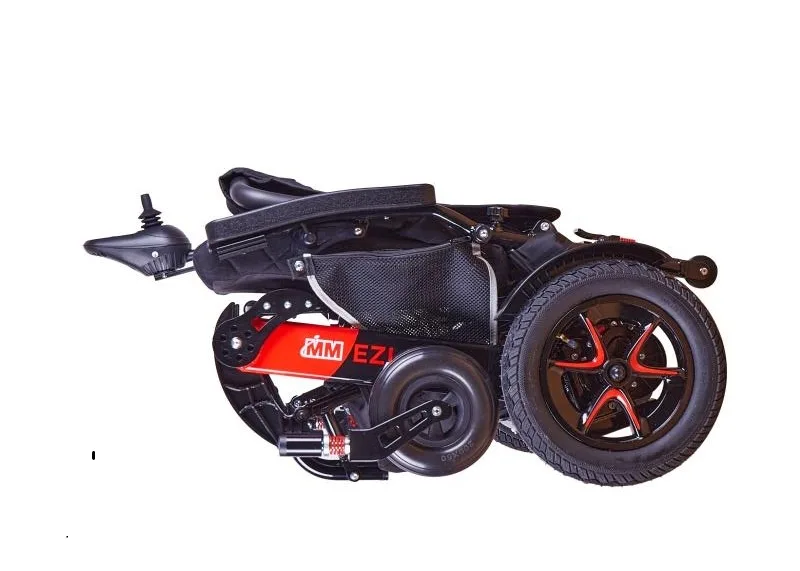
How often will you be using your wheelchair? Some wheelchairs are designed for infrequent use, such as short trips to appointments or the shops, whereas others are more suited to frequent and constant use. Wheelchairs designed for frequent use offer more comfort and pressure relief.
Consider the range of features you’d like in your chair – and whether they come as standard or at an extra cost. These might include footplates, armrests, cup holders, and storage options.
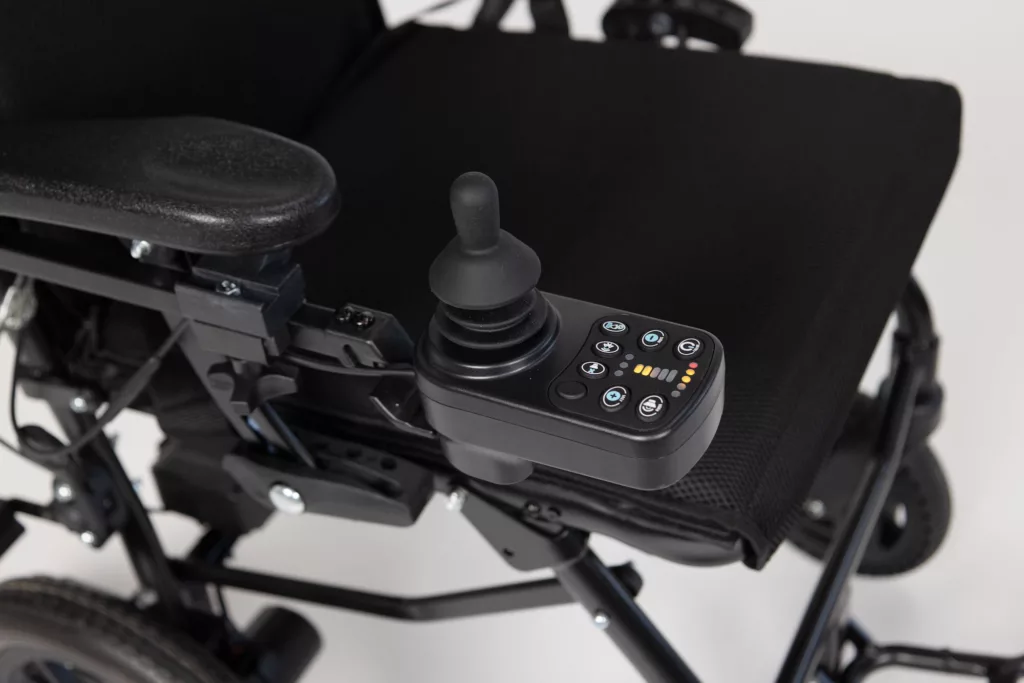
We hope we have helped you better understand the benefits and drawbacks of the different types of wheelchairs available on the market.
At Monarch Mobility, we are able to provide further advice and guidance on the best wheelchair for you based on your budget and your needs.
Contact us for more information or for a free home demo.
Mobility scooters are battery-powered vehicles that help people who have difficulty walking due to age or disability regain their independence.
They can travel up to 50km (30 miles) at a time, enabling users to visit shops, family and friends in lieu of walking or driving.
Whilst there are mobility scooters available for all needs and budgets, many users want to know if they can get a mobility scooter on the NHS. In this article, we’ll help explain how to get a mobility scooter for free or at a reduced cost.
Mobility scooters are generally not available on the NHS; however, they may be available to you if you meet certain criteria, such as having a permanent or long-term mobility issue that significantly affects your ability to walk.
To check your eligibility, you should contact your GP or local NHS mobility service.
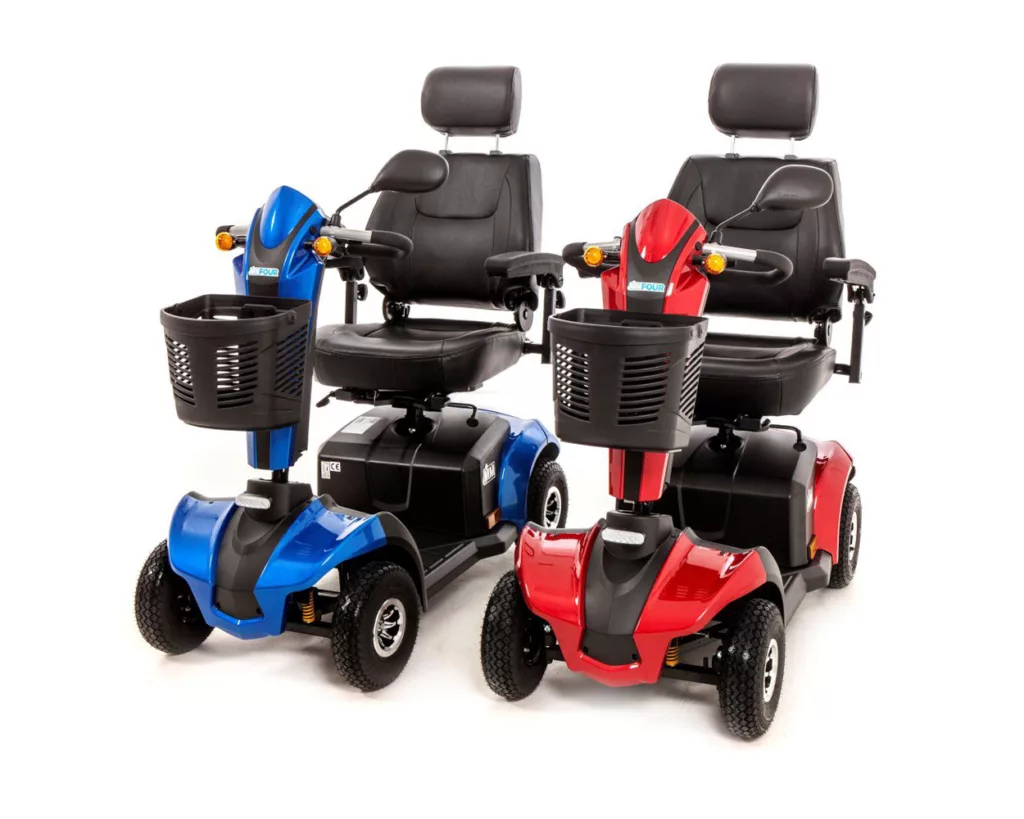
Whilst you may not be able to get free NHS mobility scooters, there is funding support available through local councils, charities, schemes and grants. We’ll outline a few of these options below.
There are several mobility scooter schemes available in the UK, including the Motability Scheme and Personal Independence Payment (PIP).
The Motability Scheme enables disabled people and those with limited mobility to gain access to mobility scooters at a reduced cost. You can use your government-funded mobility allowance to lease a new electric mobility scooter every three years.
The Personal Independence Payment (PIP) Scheme offers financial support to those who have a long-term disability or health condition, which means you could be eligible to get a mobility scooter for either a reduced cost or no cost at all.

There are various government disability grants available for mobility scooters, which include the Disabled Facilities Grant (DFG) and Access-to-Work Scheme. Each has their own eligibility criteria.
Many UK charities support the elderly or disabled in purchasing a mobility scooter. Eligibility criteria will depend on the charity.
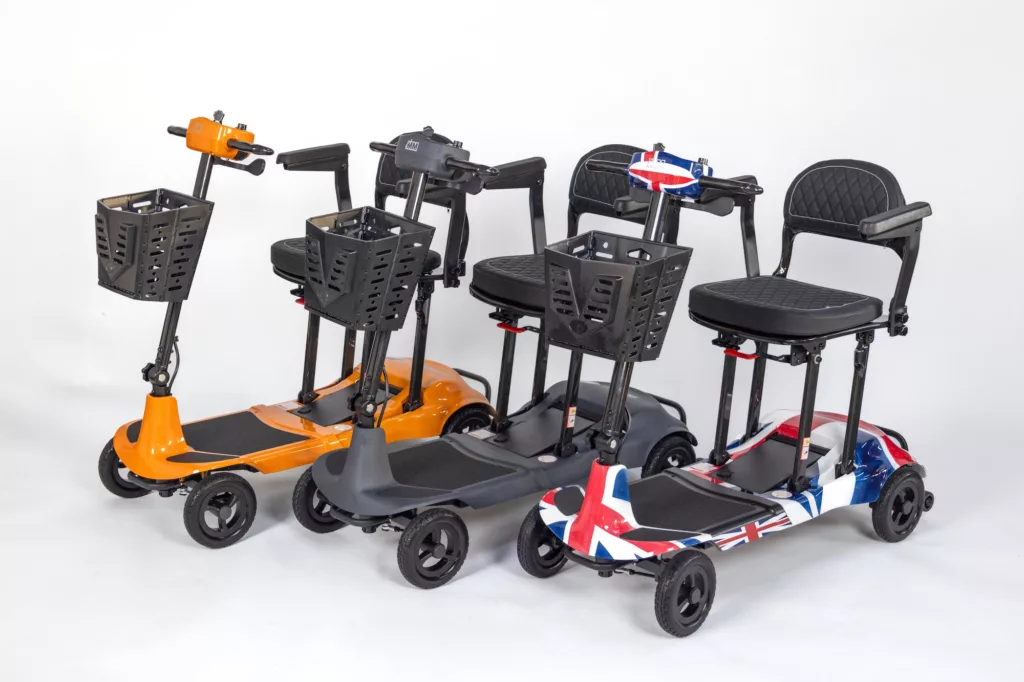
While mobility scooters are generally not available on the NHS, Monarch Mobility is on hand to provide advice on how you can gain financial support to help regain your independence and choose the best mobility scooter for your needs. If you are not eligible for any grants or funding, we also have a range of mobility scooter finance options to make your mobility more affordable.
We’re one of only a few Motability mobility scooter partners across the UK, and our specialist advisors can help find you the perfect mobility scooter for your needs and budget. Contact our friendly team today, or enquire about a free home demonstration, where one of our specialists will come and talk to you about your options, as well as bringing a selection of mobility scooters that you can try before you buy.
If you need to store your mobility scooter while you’re away or the weather takes a turn for the worse, adequate storage is key to protecting it. Mobility scooters must be stored properly to ensure they continue to perform well. One of the most common sources of damage to mobility scooters is gradual weathering over time when stored incorrectly.
At Monarch Mobility, we understand our customers want to protect their mobility investment, and we’re here to advise on the best storage solutions for your mobility scooter. If you’re looking for various storage options to protect your scooter, discover our list of the top 5 mobility scooter storage solutions to ensure your scooter lasts and stays in mint condition.
Finding the right storage method for your mobility scooter and lifestyle is crucial. From small spaces to larger areas, there’s sure to be a solution for every type of mobility scooter owner.
Our top 5 recommendations for storing your mobility scooter will keep it safe, secure, and ready to roll whenever you need it.
While storing your mobility scooter outside isn’t one of the most effective storage options for security and weather protection, it is the cheapest and most space-friendly!
You can easily store your mobility scooter under a carport or in an open space in your porch or driveway, where it will be somewhat protected from the weather while remaining outside. We’d recommend combining this with the next option below.
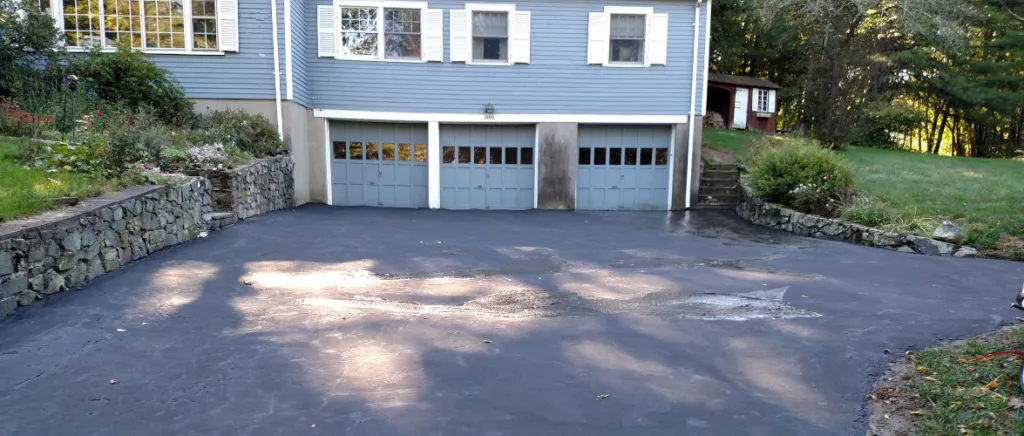
Waterproof covers designed for mobility scooters are the most cost-efficient and high-quality way of protecting your scooter from the weather when stored outside. Their ease of use and basic protection from the weather make them an excellent solution for on-the-go protection and storing outdoors at home.
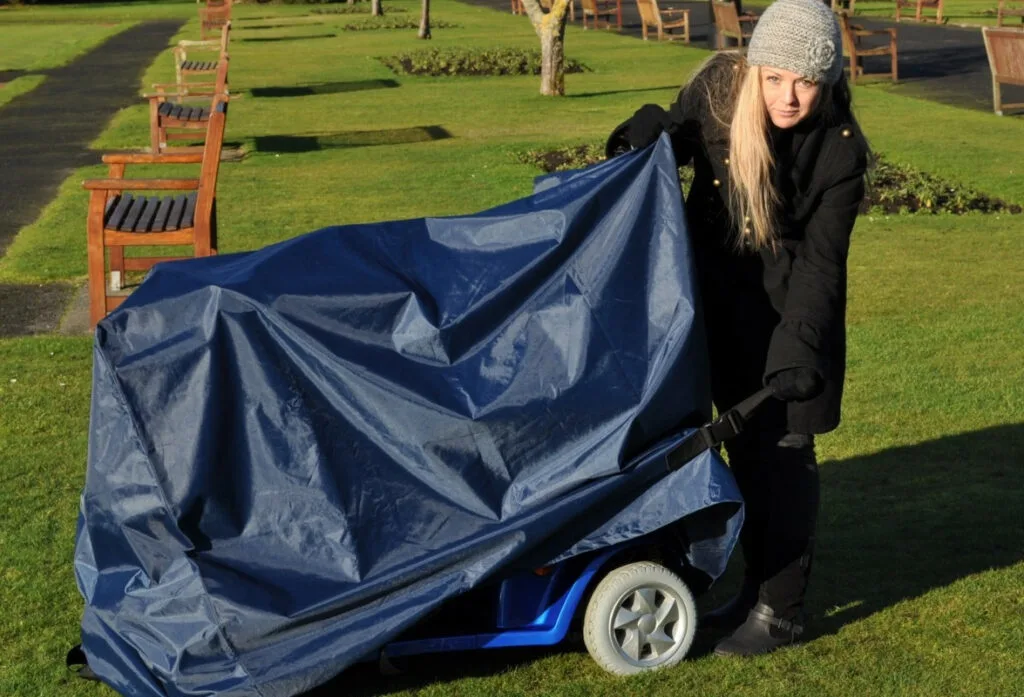
Lockable, weather-resistant cabinets or storage boxes provide a great alternative to traditional outdoor storage without requiring much set-up.
Custom-built storage solutions for your mobility scooter help maximise the space you have available and will fit the specific needs of your mobility scooter model. Not only do lockable storage units save on garden space, but they are also high-security options that offer great protection from the elements.

Using garden sheds or specially designed storage sheds for mobility scooters is a practical option for those looking to create a dedicated outdoor storage space for their scooters.
By providing a designated mobility scooter outdoor storage space, you can protect it from the rain and save on space while keeping your garden neat and tidy.

Storing your mobility scooter inside your home, garage, or a dedicated indoor area is, without a doubt, the best option if you have the space for it. With this option, you can benefit from 24/7 protection from the weather and enhanced security in your own home.
If you have the luxury of a secure indoor space, this is the best way to keep your scooter secure and safe from weathering and thieves.

Some of the critical requirements for storing a mobility scooter include space and easy access.
In addition, it’s essential to protect your scooter from extreme weather conditions and other environmental factors, such as keeping it away from dirt or dust.
Also crucial for protecting your mobility scooter is choosing the right storage location. The storage space you keep your scooter can dictate its longevity, condition and the quality it stays in.
Whether your mobility scooter is stored indoors or outdoors, security should also be a consideration in your storage choice. Using locks, chains, or secure storage units when your mobility scooter is outside is one way to protect it from physical damage and prevent it from being stolen in public places.
Please read our full article on how to keep your mobility scooter secure against theft and what you need to stay safe.
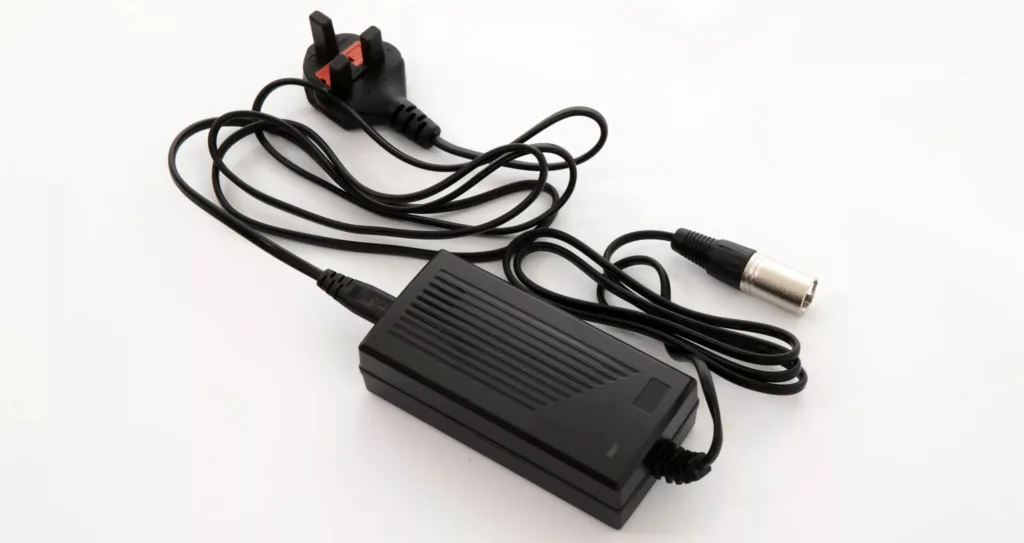
We recommend assessing your storage needs and choosing the most suitable solution for your mobility scooter type. The proper storage and the right accessories can prolong the life of your mobility scooter and effortlessly enhance your overall riding experience.
If you’re looking to invest in a mobility scooter, shop our range of mobility scooters online, visit our Halifax showroom to see our stock or contact us at 0800 002 9633 for expert mobility advice today.
We also offer FREE home demonstrations, where we can bring our recommended mobility scooters or powerchairs to your home for you to try before you buy.
You can also explore Monarch Mobility’s high-quality range of mobility scooters, chargers and accessories to ensure your scooter is always ready to go, regardless of your chosen storage method.
A riser recliner chair is more than just a comfortable place to take a seat – for many, it’s a mobility aid that can transform daily life and reinstate a sense of independence in your home. A riser recliner chair is designed to tilt and lift, taking users from a seated position to standing with ease.
But are recliners good for your health? Here are some of the benefits of a riser recliner chair, from reducing physical discomfort after surgery and encouraging better posture when sitting for long periods, to reducing aches and pains, minimising the risk of pressure sores and even improving circulation.
The loss of independence that can come with reduced mobility can be difficult to comprehend and an emotional experience.
For those who experience difficulty moving from a seated to standing position, a benefit of riser recliner chairs is their ability to return some much-needed independence and the mental benefits that also come with having more mobility again. More importantly, the built-in lift feature of riser recliner chairs allow the user to stand up and sit down without assistance, safely and with confidence, lowering the risk of falls from unsupported movement.
Painful pressure sores are a common risk of spending extended periods of time in a seated position. For those with limited mobility in particular, regular movement to redistribute the weight may be difficult, leading to concentrated pressure on certain parts of the body. Riser recliner chairs are designed to redistribute weight more evenly, reducing the chance of sores substantially.
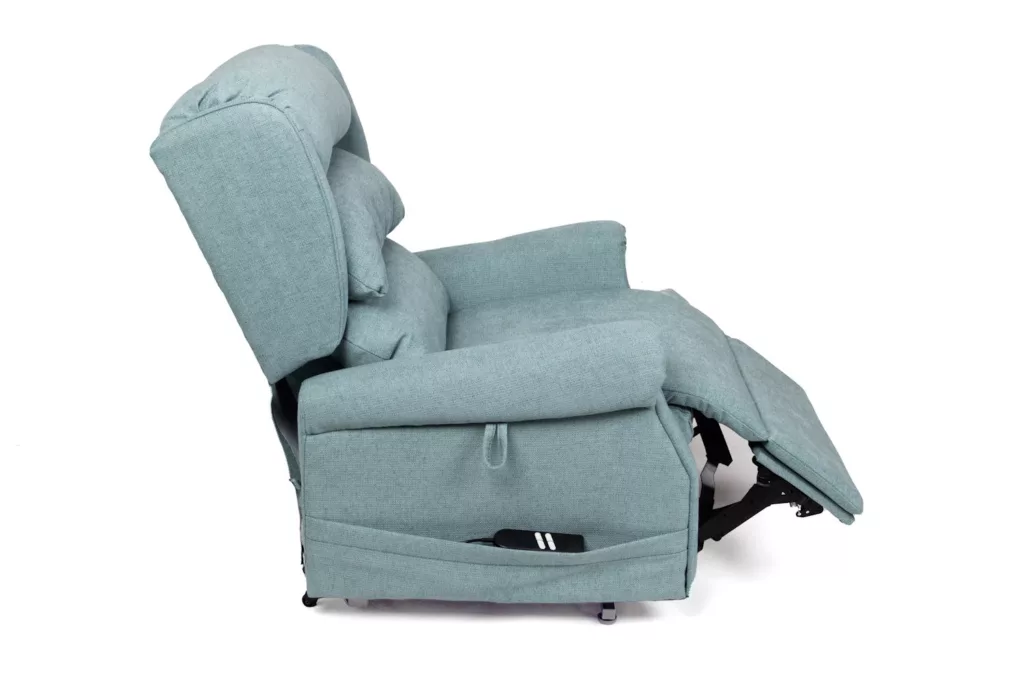
Aches and pains can often be attributed to poor seating positions or inadequate support on key areas like the spine, hips and legs when seated for long periods of time. Health benefits of recliner chairs include their ability to offer a range of reclining positions that alleviate pressure on areas that are often problematic.
This relieves tension on the muscles and supports the body whilst allowing the user to find a comfortable position, even for long periods of time.
Reduced mobility at home can take the pleasure out of even the simplest of activities; watching your favourite television show or spending a leisurely few hours reading is much less enjoyable when you can’t get comfortable.
One of the most important features of riser recliner chairs is an adjustable seating position, allowing users to adjust the angle of the chair to suit whatever they are doing, whether that is upright for coffee with a friend or reclined for a nap.
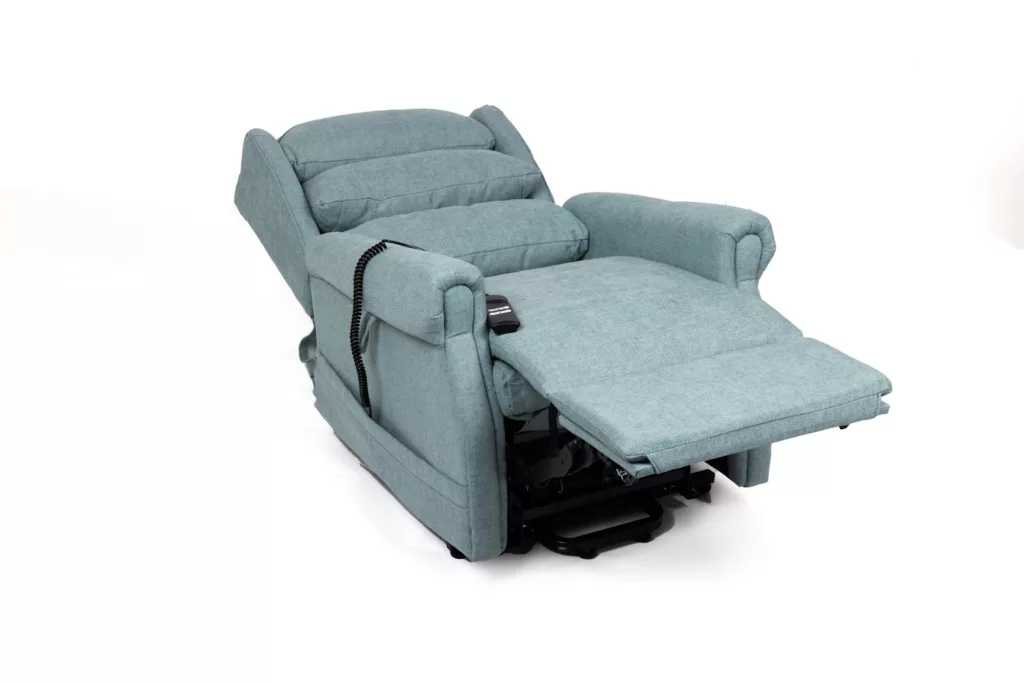
Recliner chairs are also designed to suit the natural curvature of the spine. Their adjustable seating positions encourage better posture and reduce the risk of back pain and wider issues that bad posture can often cause.
Individuals with reduced mobility can often experience issues with their circulation, leading to uncomfortable symptoms including swelling in the legs, numb hands or feet, cramping in the muscles, and even angina as blood struggles to reach the heart muscles.
Riser recliner chairs enable users to elevate their legs, improving blood flow, reducing heart pressure, and reducing discomfort for those with conditions such as oedema and varicose veins.
When limited mobility means long periods spent seated, a riser recliner chair means you needn’t compromise on comfort in favour of support.
Whether a chair is required to help an individual live with chronic conditions such as arthritis, to support rehabilitation after surgery or simply to enable more freedom in the home, multiple adjustment options allow users to easily adjust their seating position for unmatched comfort in whatever the day brings.
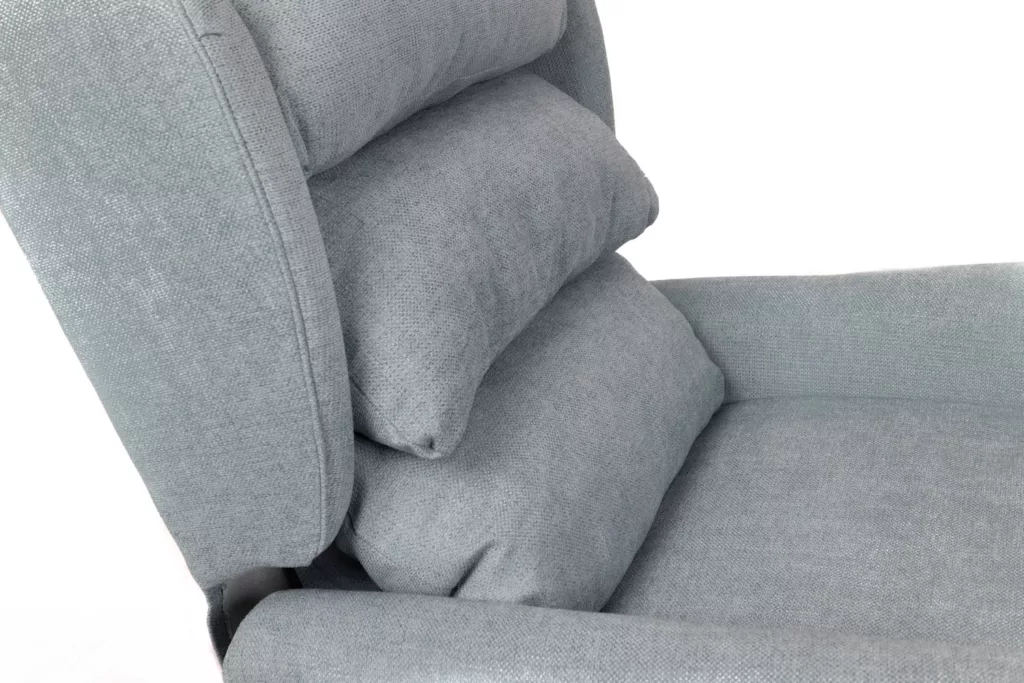
Riser recliner chairs can provide targeted support and relief, and offer increased mobility for those dealing with a range of health conditions including:
The gentle movement of a riser recliner chair allows users to easily change their seating position, allowing smoother, more confident transitions from sitting to standing. With increased movement comes better blood circulation, leading to improved joint flexibility and less inflammation.
A riser recliner chair can help individuals suffering with Reynaud’s Disease by making the transition from sitting to standing easier and less painful. It can also help sufferers to maintain good circulation, something which is imperative for relieving discomfort from symptoms of Reynaud’s.
Getting in and out of bed immediately after a hip replacement can be difficult and painful, but a riser recliner chair can offer a comfortable place to both sit in the day and recline into a sleeping position at night.
Riser recliner chairs also sit at a higher position than traditional chairs, making them both easier and safer to get in and out of when recovering from a hip replacement.
Making sure you get some movement back in the knee joint, whilst avoiding bending it too frequently or too suddenly, is an important part of recovery from knee surgery. A riser recliner chair can better support the knees to reduce pain, as well as promoting good circulation through elevating the legs, promoting healing post-surgery.
The pain associated with multiple sclerosis can make both sitting and standing for long periods painful.
Benefits of riser recliner chairs for individuals with MS can include relieved pressure on the back and legs through angled position settings, along with better blood flow, lessening discomfort caused by fluid retention. A riser recliner chair can also see a notable increase in independence, bringing both physical and psychological benefits.
Oedema is caused by a build up of fluid in an area of the body, most often the feet and legs, leading to heavy, tight and painful limbs. The condition is particularly difficult as it is exacerbated by long periods of sitting but often leaves sufferers in too much pain to walk, creating a cycle.
Benefits of riser recline chairs for oedema sufferers includes the ability to keep the legs elevated above heart level to reduce swelling, as well as creating a more comfortable place to sit for longer periods of time when symptoms are too painful for movement.
Individuals affected by osteoporosis are susceptible to an increased risk of injury to fragile bones. By gently lifting users between positions, we can see fewer falls and, as a result, fewer injuries by using a riser recliner chair for osteoporosis.
Sciatica occurs when the sciatic nerve becomes irritated, and its effects can be debilitating. Reducing muscle tension and improving posture using a riser recliner chair can lessen the likelihood of experiencing sciatica, while adjustable recline positions will relieve pressure on the lower back and offer more comfort to those already suffering from the condition.
All of the health benefits of recliner chairs mentioned in this guide can be enjoyed with a Monarch riser recliner chair. Check out this article if you want to know how a Riser Recliner Chair works!
Built-in features such as electric motor ‘Tilt-and-Lift’ technology, dual motor capabilities for adjustable positioning, and supportive foam seating all support the health benefits of riser recliner chairs for a variety of conditions.
We understand that knowing whether a riser recliner chair is right for you can be difficult, but we are by your side throughout the buying process – from advising on the right chair for you, and how to use it for optimum comfort and ease, to arranging free delivery and installation, along with providing a one-year warranty for peace of mind.
Image: Cindy Shebley
In the UK, mobility scooters are designed to provide independence to those with mobility issues and disabilities. As part of this independence, many mobility scooter users may also wonder if it is illegal to travel on their mobility scooter after drinking alcohol.
There are no specified government laws in the UK strictly on this matter. However, even people who rely on a mobility scooter to get about are still subject to the same consequences of drunk driving when there is a chance of endangering others in public spaces or causing damage, especially on roads.
While mobility scooters are categorised as “invalid carriages” and are not subject to the same UK laws as motor vehicles, the road rules still apply when they are not operated sensibly or when users ignore road laws due to being under the influence of alcohol.
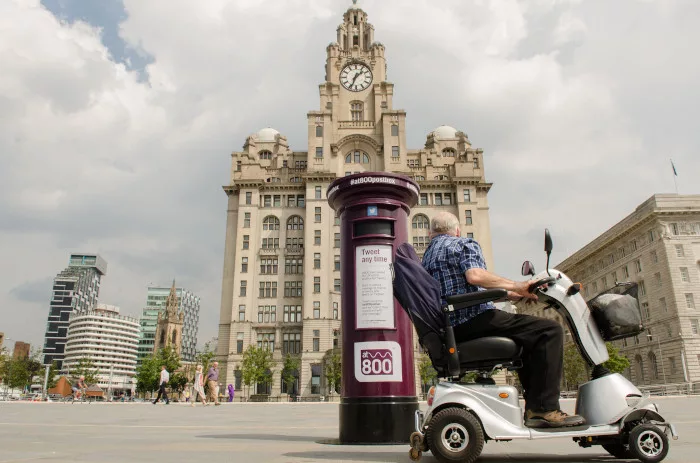
Mobility scooters are different from cars or other motor vehicles, so there are different rules for scooters of different classes. These rules and requirements vary for mobility scooters intended for pavements and pedestrian spaces, and those designed for roads.
Mobility scooters, whether class 2 or 3, are all subject to UK law, and the permissions and rules for each class differ.
Important note: If you are in an accident that’s not classed under these scooter conditions and goes above the maximum speed, you will be treated the same as someone driving a car. You could be imprisoned, banned from driving, or fined.
If charged with drunk driving in a car, as a consequence, you will lose your license for this offence.
However, because a mobility scooter is not legally classed as a motor vehicle, mobility scooter laws consider different circumstances before giving penalties.
While there isn’t a specific legal alcohol limit for the use of mobility scooters or a requirement for breathalysers, it is important to use common sense, be aware of road safety rules, and not operate a mobility scooter if you are unfit to drive safely.
Moderation is key, and a good rule of thumb may be to abide by the current UK drink driving laws – depending on your weight, age, sex and metabolism, you may reach the drink drive limit after just one alcoholic drink. The most sensible way to go about this is to avoid drinking alcohol altogether.
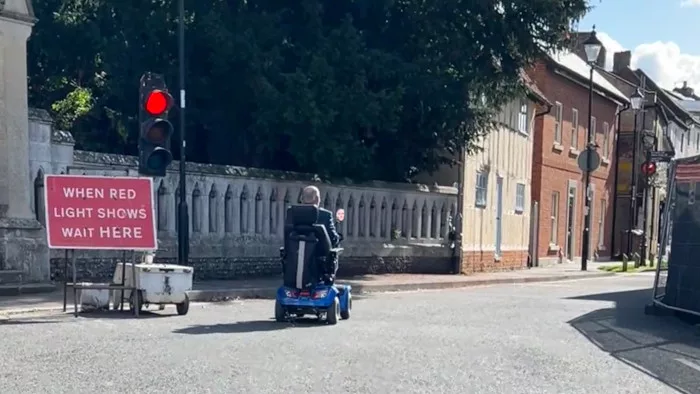
If you choose to drink and drive a mobility scooter and get caught, this could result in a number of penalties, such as:
Repercussions for this may vary based on the severity of the incident. However, driving a mobility scooter while intoxicated can be dangerous, both to you and to others, and it is actively discouraged by authorities to avoid any incidents taking place.
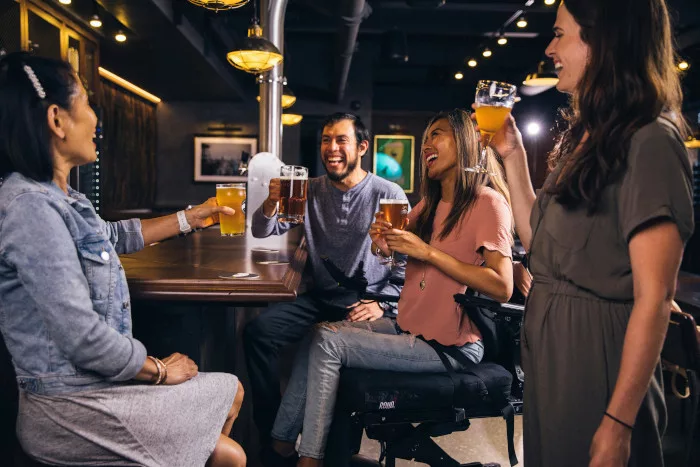
Alcohol can decrease your reaction time, as well as other senses, which are essential for driving on the road. Caution should be taken when consuming alcohol, and it’s important not to operate a mobility scooter while under the influence.
It isn’t essential to have a driver’s licence to use a mobility scooter in the UK. However, users should be familiar with the Highway Code and mobility scooter regulations to use one safely.

Be careful when consuming alcohol and look at alternative methods of transport to avoid drunk driving with a mobility scooter, such as asking for help from a friend or using public transport which can accommodate you.
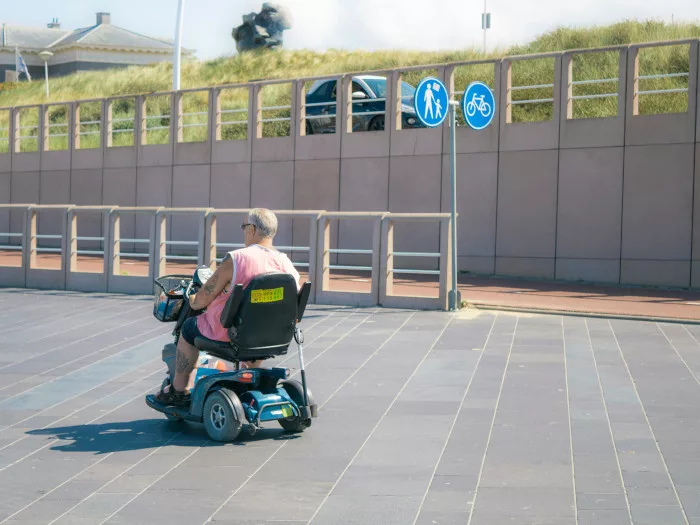
We believe safety and legal compliance are paramount for mobility scooter users. To avoid breaking UK road rules, remember to stay safe on the roads and practice self-control when it comes to drinking alcohol and avoid being drunk in charge of a mobility scooter.

Alongside this, make sure to familiarise yourself with our guide so you know where you are allowed to use a mobility scooter and the rules for using it.
When you purchase a mobility scooter from us, we will help provide the correct advice on using your scooter safely.
At Monarch Mobility, we stock a high-quality selection of mobility scooters to suit your needs and help revitalise your daily routine. Browse our range and learn more about the different classes of mobility scooters we stock. We also find the right insurance plan for you so you can enjoy your scooter fully and stay safe with confidence.

Contact us today with any product queries or mobility advice, and we can help you find the right mobility solution.
A riser recliner chair is a gateway to more independence, bridging comfort and convenience to make a real difference to the life of those with reduced mobility.
Riser recliner chairs are designed with lift and tilt mechanisms that take the hard work out of going from seated to standing and vice versa, along with reclining capabilities that see them transform from an armchair to a recliner.
But how does a recliner chair work, and how can choosing the right recliner chair mechanism benefit your health and improve your mobility? Let’s take a look.
For individuals with mobility issues, getting in and out of a chair can be challenging, limiting independence and making it difficult to get comfortable at home.
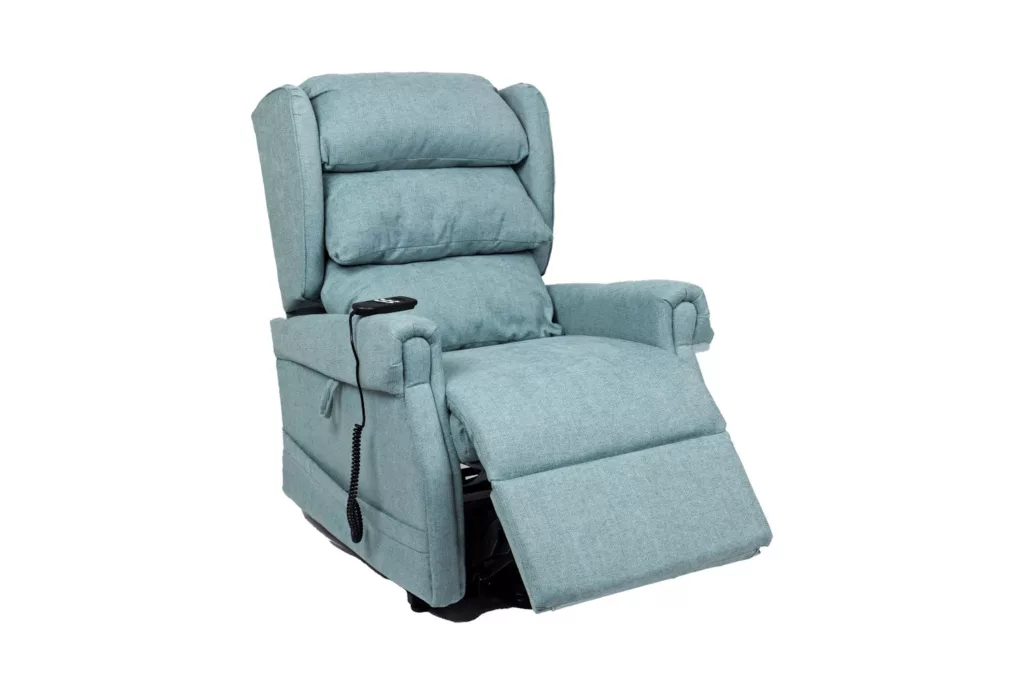
Riser recliner chairs are designed to make the transition from standing to seating simple and effortless. Rather than requiring you to lower yourself into the chair, a riser recliner chair mechanism brings the seat up to standing level, so that you needn’t bend down at all.
Once you are ready, simply press the button and a lowering action will bring you to a seated position; perfect if you have knee or back issues, or are unsteady on your feet.
Footrests are one of the main benefits of riser recliner chairs. Models including our Rise N Recline chair feature a built-in footrest with a recliner chair mechanism that will allow you to easily elevate your legs and feet, offering not only more comfort but also supporting and easing pressure on the lower body.
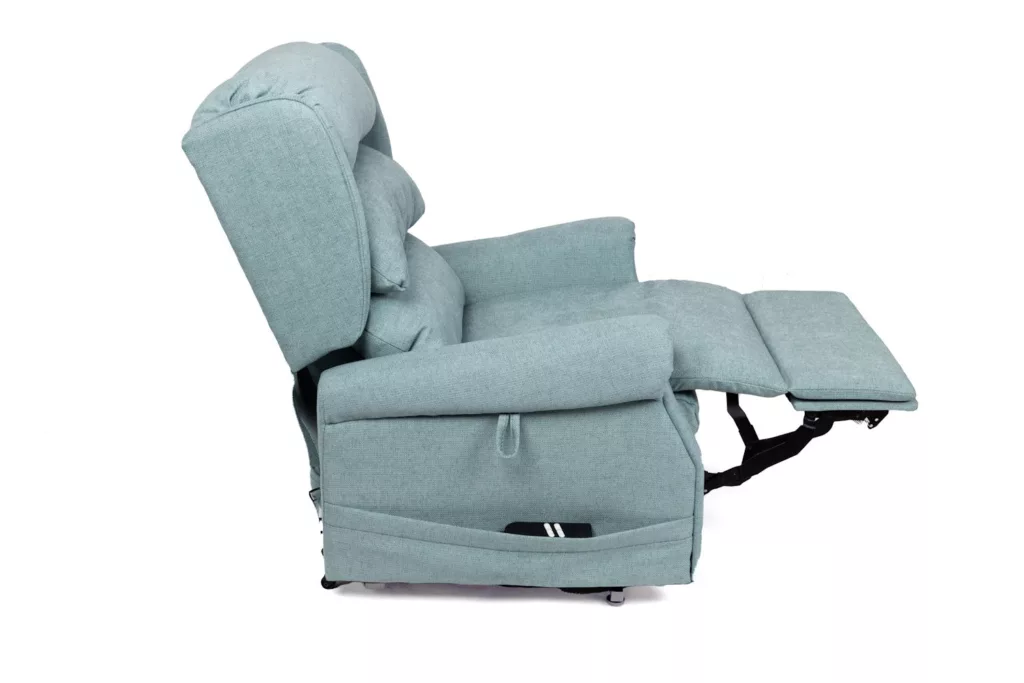
Footrests can also help lift the legs above heart level, helping with circulation issues, so putting your feet up can be good for your health as well as your mind.
So how does a reclining chair work? The gentle reclining function will allow you to find a comfortable resting position at the touch of a button.

When you press the button, the chair’s backrest and footrest will mechanically adjust to support you into a gently reclined position. Riser recliner chairs are designed to reduce any strain on the body for maximum comfort, whether you are getting comfy to read or cosying up for a nap.
When it’s time to stand up, the reclining chair mechanisms are designed to do most of the work for you.
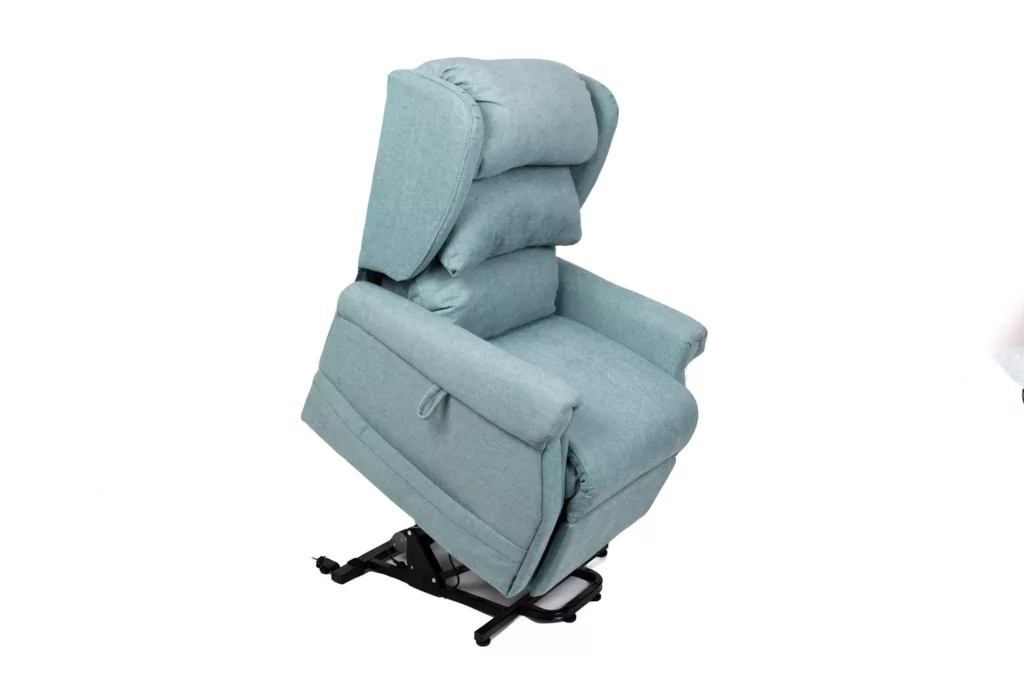
With the touch of a button, the mechanisms will gently tilt and raise the chair, guiding you from a seated to a near-standing position. This steady transition will put you in a good position to fully stand safely and with stability, reducing strain on the body and the chance of injury.
Along with how to use rise and recline chairs, the difference between single-motor and dual-motor models is one of the most frequently asked questions.

A single-motor riser recliner chair uses one recliner chair mechanism to control both the footrest and the backrest, so both move together. Dual-motor chairs, like Monarch Mobility’s Rise N Recline chair, feature separate controls for the backrest and footrest, allowing each part to be adjusted individually and offering more options for chair configuration. This flexibility enables you to better tailor your seating position to your individual preferences and support needs.
Monarch Mobility’s riser recliner chair promises maximum comfort and support with features including dual-motor reclining, rise support technology and premium fabrics for ultimate relaxation.
Riser recliner chairs offer a host of health benefits for those with mobility or circulation issues, promoting more independence and a better quality of life. With free delivery, free installation and a one-year warranty protecting your riser reclining chair mechanisms, Monarch is by your side throughout the process of adding a chair to your home.
Discover our full range of riser recliner chairs to find the perfect fit for your comfort and mobility needs.
Will you be joining us at the Motability Harrogate event on the 1st and 2nd of August?